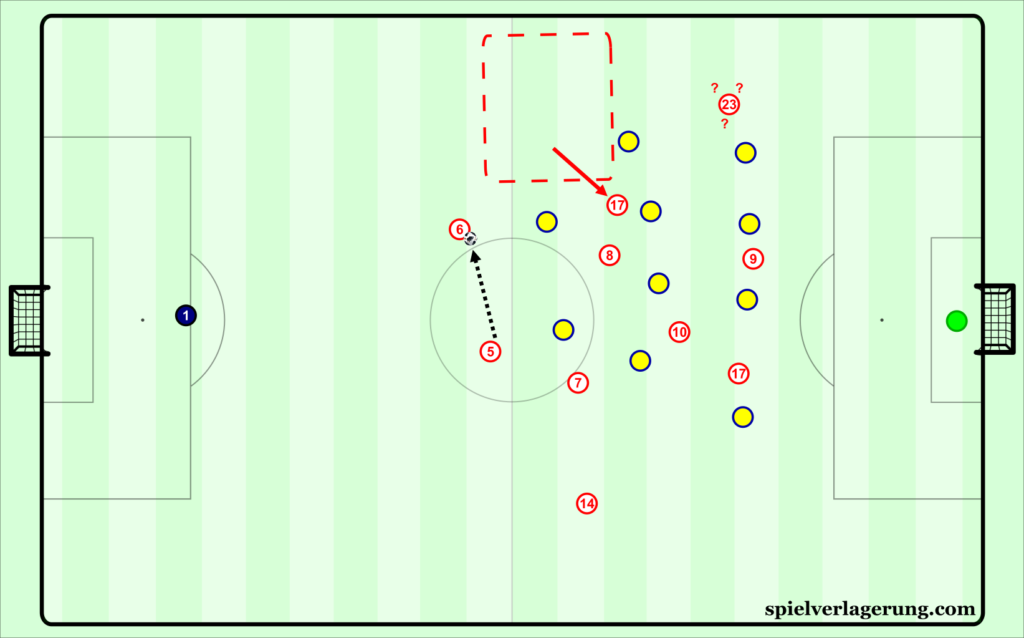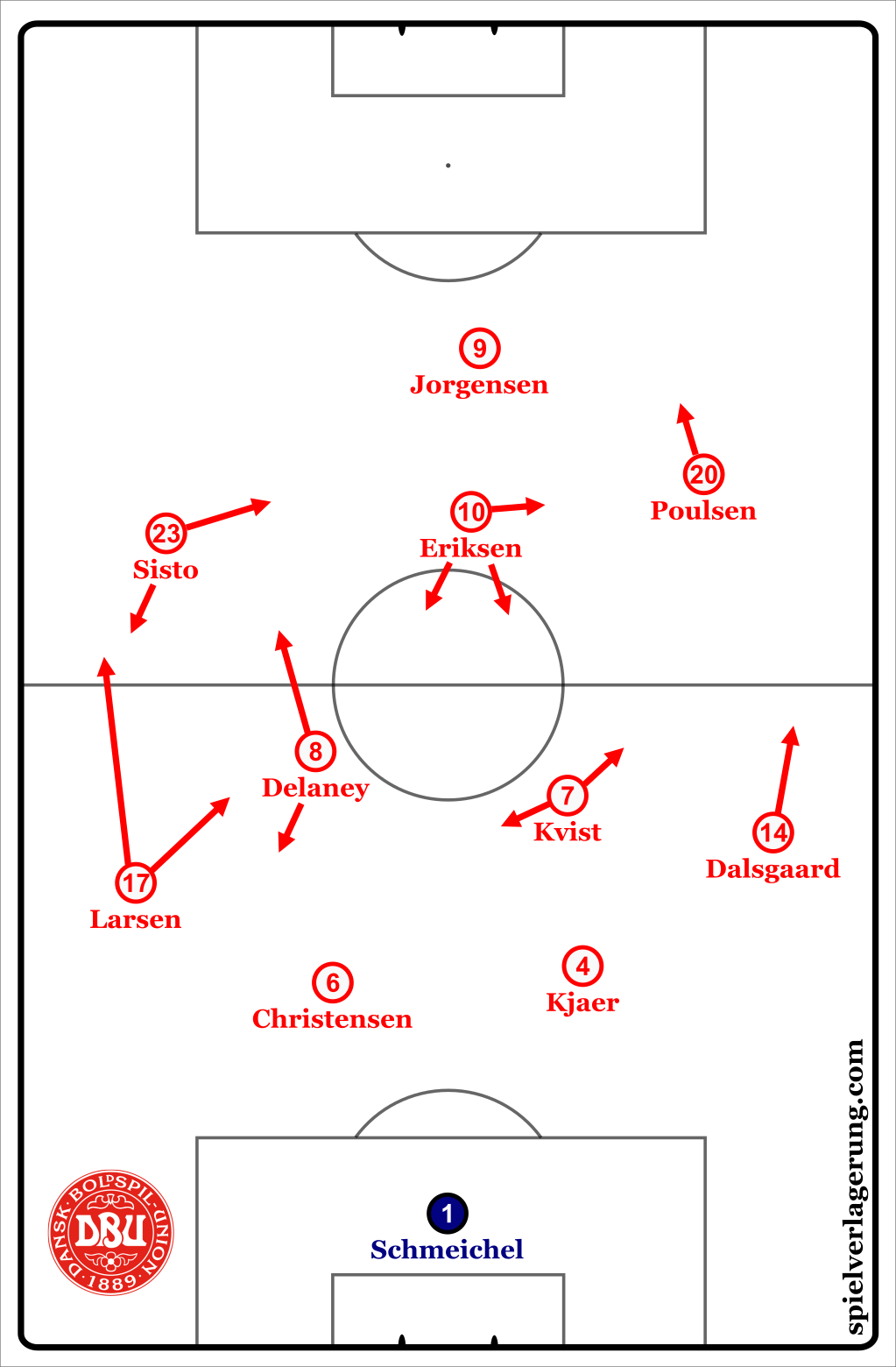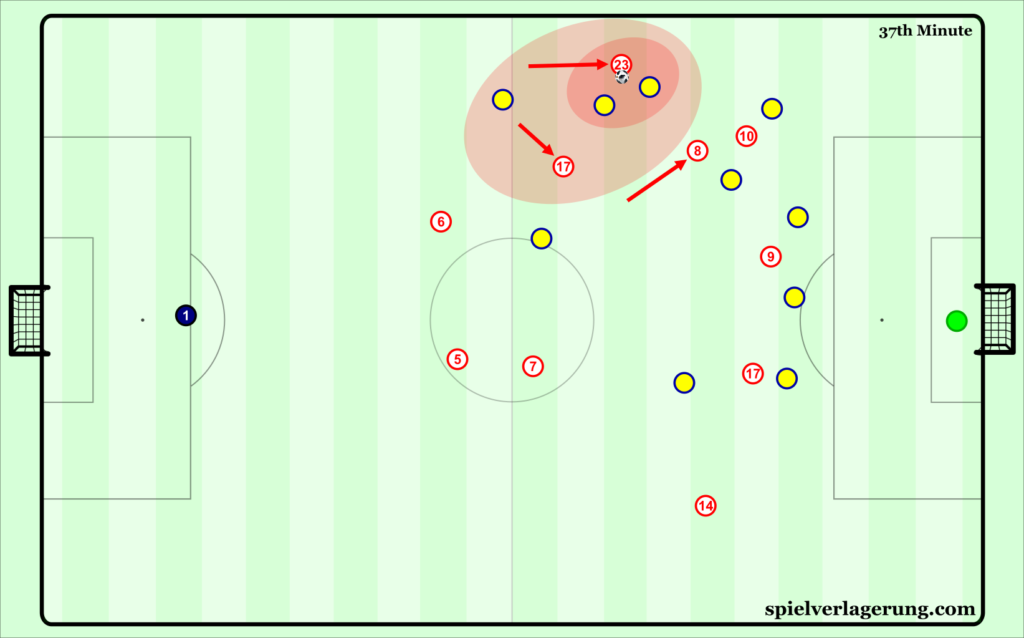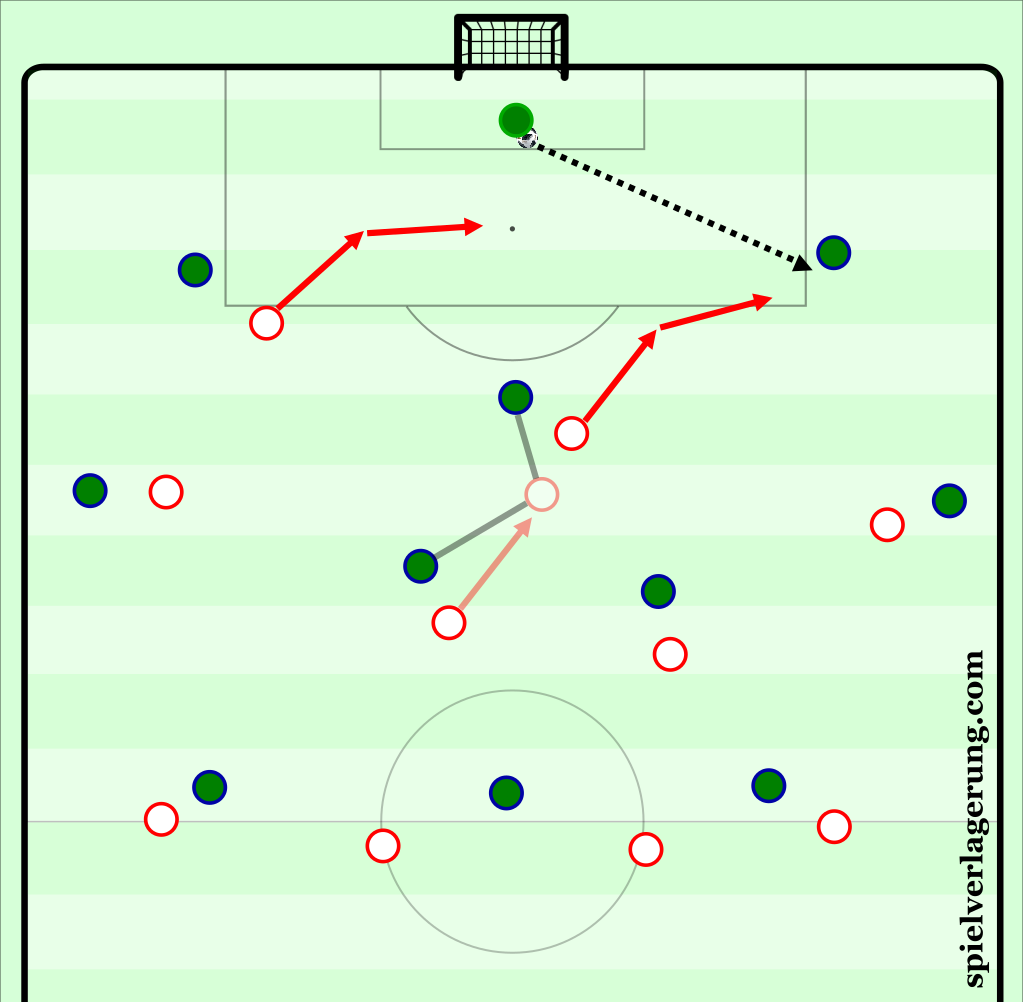World Cup Preview: Denmark
One of the lesser-mentioned teams going into the 2018 World Cup is Age Hareide’s Denmark side. This may be because of their apparent lack of immediate superstar talent, but further investigation suggests that Hareide makes excellent use of the resources at his disposal. The Danes are far from remarkable but represent an efficient footballing machine that may yet cause a shock or two.
Since Hareide’s first game in early 2016, the team has undertaken a shift to what some would describe as a more pragmatic style of play. This Danish team is now greater than the sum of its parts in a way that few international teams are. In this regard, the team is built in the image of its star player, Christian Eriksen. After continual year-on-year improvements, Eriksen is now truly one of the best players in the world.
Whilst some coaches may create a system truly built around their talisman, this would actually be contrary to his strengths. Rather than relying on Eriksen to be the system, and expect his inferior teammates to react off the situations he creates, the Danes have instead created a framework within which Eriksen’s outstanding anticipation and intelligence can be exploited.
The depth of the squad facilitates this approach. For almost every personnel change, there is merely a slight tweak in how the team plays rather than a total overhaul of the underlying principles. Rather than a total shift in the system, only the nuances of particular moments change. This can be particularly handy in tournaments such as the World Cup, where lineup changes are seemingly inevitable, even if the Danes don’t reach the latter stages of the competition. It also gives manager Hareide some interesting options depending on the demands of each match.
In Possession
The build-up approach of the Danish team is an interesting one, which is driven by the combination of fairly unique skillsets in their standard starting team. They do not utilise what would be described as one typical style of play. Instead, there seems to be a ruthless intent on creating situations that make use of these unique skillsets. As such, this sometimes makes them look as if they’re a team who wishes to play out from the back, whereas in other moments they appear to utilise a more direct style.
This is best symbolised, and perhaps dictated, by the asymmetry in their build-up approach. The left side triangle of Larsen(LB) – Delaney(CM) – Sisto(LW) represents one of the few ever-present combinations in recent months. In terms of building out from deep positions, there seems to be a fairly heavy focus on the left side, and it is largely because of the collective movements of these three players. Rather than retaining positions in areas where those roles would traditionally be expected to play, there is more flexibility given in how they position themselves. This allows the players to react off each other, counterbalancing the movements of their teammates. Even disregarding many of the other players in the team, this alone can create a fairly complex system with a number of different potential movement patterns.
These movements are often triggered when the ball is re-circulated from right to left, particularly when through deep-lying midfielder William Kvist. One example – rather than Larsen standing in a ‘traditional’ left back role, he will often stay/move inside in a manner popularised by some of Pep Guardiola’s full-backs, most recently Fabian Delph. As the ball, and inevitably his teammates and the opposition players, is shifted from right to left, Larsen will often hold his position as the play drifts across him and every other player shifts laterally as play moves towards the Danish left. Starting on the outside of the opposition defensive block, he generally ends up somewhere inside it once the recirculation is complete. This then triggers Sisto (whose starting position would have to be wide to trigger this reaction from Larsen) to drop deeper and balance the movement of his teammate. Depending on the reactions of the opponents, and the co-ordination of the movements themselves, this can create different options for the Danish player in possession.
The aim of this is to destabilise the opposition defensive shape, and create potentially advantageous situations out of these moments for the Danes to exploit. Within this pattern particularly, there are clear advantages. Given the quickly-changing position of the ball during these moments, also recognising the fairly uncommon pattern utilised by Larsen & Sisto can be difficult to process quickly and react to optimally within the timeframe required.
Depending on the defensive approach of the opposition, different movements will have varying levels of success. For example, this particular pattern was particularly useful against the more man-oriented defensive approach of Mexico. The sharp forward movements of Larsen in the halfspace in these moments were integral in attracting the attentions of the near side winger, and creating space for Sisto to receive in positive situations without dropping too deep to receive from Christensen. Here he could then use his receiving skills and immediate burst of speed to dribble in dangerous positions. This often involves a sharp diagonal move towards goal whilst the opposition are still laterally shifting towards the ball – unsurprisingly difficult to defend, particularly when he is able to directly attack the last line immediately.
However, against Sweden, the equivalent near side winger within the Swedish team was less attracted to these movements. Rather than being affected by Larsen’s runs and tracking them (even half-heartedly), he maintained position. This forced Sisto to drop much deeper to receive the ball from Christensen. As such, he was unable to immediately penetrate in dangerous areas, instead having to beat two or three players before being able to run at the last line. This also has the added disadvantage of further defensive instability – if Sisto loses the ball in these moments, particularly with a horizontal pass or dribble, then the Danes are very vulnerable on the counter attack.
These patterns are driven by overriding objectives that the Danes aim to achieve. Regardless of the width and depth of Sisto & Larsen, their aims appear to be the same. Larsen will aggressively attack the last line when a defender receives the ball in space – this can comfortably occur from an underlapping or overlapping situation. Whereas the aim of Sisto seems to be to receive in situations where he can immediately make dangerous forward movements, utilising his sharp burst of speed and strong dribbling skills.
Alongside these overriding objectives and particular patterns is the presence of some implicit semi-automatic triggers. For example, a re-circulation into Kjaer receiving in space begins the movement pattern. In certain situations, this may lead Larsen to immediately attack the last line and attempt to receive the ball in behind. In other situations, where Larsen’s starting position is deeper and less-effectively oriented to the open field of play, he will let play drift across him and occupy the deeper position detailed previously.
Clearly these moments provoke opportunities for poor co-ordination, as the patterns are driven by the principles the Danes aim to achieve rather than being totally automated and prescribed. This can particularly create problems for the left-sided central defender, often Andreas Christensen. If the opposition are suitably structured to block the passing lane to Larsen inside without creating a large space for Sisto to occupy in an advanced area, Sisto can be unavailable rather than dropping all the way into the first build-up line. Even though Christensen is more comfortable in these uncomfortable moments than CB partner Kjaer, this is still not ideal.

Larsen moves inside but there is no counterbalancing movement to fill the vacated space, leaving Christensen with fewer potential options.
This combination of potential movement combinations is hardly revolutionary, but can be considered a fairly major foundation for the Danes’ build-up structure. It represents a similar basis as that utilised by Barcelona in years gone by, with Dani Alves, Ivan Rakitic & Lionel Messi. In that case, the roles of Alves & Rakitic were largely to react and balance the team’s structure as a result of Messi’s freedom on and off the ball. However, Denmark has no player even nearly reminiscent of Messi, and so whilst the trio acts as the basis of their build-up structure, the manner of the movements are much different. Instead, the Danes utilise these patterns to create situations where Larsen can attack the last line or Sisto can receive the ball in moments where he can immediately receive and dribble.
However, the right side is structured in an almost entirely different way. And in moments such as these, where the team needs an emergency relocation of play or is struggling to build effectively, this is often very useful. Rather than building from deep, the right side is structured in a manner that facilitates a more direct style of play. This is likely due to the personnel available to Hareide. Rather than a classical right-winger, a larger striker is often used in this position, notably Yussuf Poulsen, who plays almost exclusively as a striker for his club team RB Leipzig. However, Jorgensen and Cornelius have also temporarily operated in these wider roles.
With this in mind, they act as an immediate target for longer balls against full-backs, who tend to be less inclined to win aerial duels than their central defensive teammates. The right back, often Dalsgaard, will also play particularly high in these moments – sometimes as a direct recipient for long balls but more often to act as another body in creating compactness around the ensuing second ball situation. In many cases he will move high very early, leaving him totally disconnected in early build-up phases which makes it very difficult to build through this side. This either forces the ball to the left or dictates that the Danes play a more direct style.
It is in the moments when the Danes do play more direct that Eriksen is able to most effectively utilise his near-unique ability to anticipate chaotic situations. Playing in the pocket behind and between Poulsen and Jorgensen, Eriksen positions himself in a manner whereby he can immediately counterpress any second ball situations. Tidying up these messy situations with such consistency is not a particularly easy thing to do, but it is something of a speciality for Eriksen.
But Eriksen is not alone in this regard, as his teammates all understand this aim and are particularly active in offering themselves as passing options within these semi-chaotic moments. Particularly on the right, with William Kvist often positioned nearby to aid the re-circulation of possession. Unlike Eriksen’s ability to play the game two seconds ahead, Kvist’s ability in aiding the team’s quick circulation (often from right to left) comes in the form of his press resistance and composure on the ball. He will pop up in a small space in these difficult moments and quickly recirculate without losing composure. And this is when the Danes look most effective – as this triggers the movement patterns mentioned previously.
Out of Possession
Much like their in-possession approach, there is not a distinct style of play that would clearly define Denmark’s approach out of possession. In a statistical analysis of pressing styles from nations across the world cup, they don’t feature as particularly distinctive in any respect. This is because their defensive approach seems largely situation-dependent.
They will often position themselves high up the pitch within their standard 4-4-1-1 shape from static situations, as this gives the opportunity to re-organise the press. Eriksen then acts as the trigger to the high press, closing down the second central defender after being initially positioned on the opponent’s deepest midfielder. The far-side central midfielder then pushes forward to create a situational and man-oriented 4-1-3-2. This doesn’t necessarily need to be heavily dictated by the position of the opposition deep-lying midfielder, as Eriksen’s angle of approach elevates the difficulty of such a pass within that timeframe. The play is then forced to one side, and ideally a long ball is forced, where Kjaer and Christensen can compete in aerial battles.
However, it is often in these moments that the Danes often look at their most vulnerable. Even against teams that are not packed full of particularly press-resistant players, they can be fairly easily played through at these points due to the 4v2 advantage around the ball. Whilst they can create moments of momentary control in the high press, the stronger teams in the competition will be able to play through fairly easily. This is particularly noticeable in games when Eriksen has not played, where teams such as Sweden have exposed this. In that game, the reduced efficiency in pressing from the ‘10’ role put the emphasis on Pione Sisto to close the second central defender, which has vastly differing affects in subsequent phases of play, noticeably on the tasks demanded of the two central midfielders.
The Danes also utilise a 4-4-1-1 shape when defending in deeper situations, which they are commonly forced into. In these situations, the striker will close half the pitch and the 10 (usually Eriksen) will again generally orient to the opposition’s deepest opposition midfielder. This is a fairly typical approach but is executed particularly well by the Danes, with the same alertness and quick reactions that make them so efficient in counterpressing moments. Simply reacting effectively to an opposition forward dropping deep by co-ordinating the reaction between central defender and central midfielder, or recognising a pressing trigger of the opposition receiving a quick pass with back to goal. These are the little things that are not particularly sexy that the Danes execute well consistently.
However, within both the deeper block, and specifically when pressing higher, it would be interesting to see how they perform against a team who utilises a first build-up line of three players rather than two. Recent opposition have only utilised this situationally, with the deepest midfielder sometimes dropping into the first line after play is initiated. This gives Eriksen a deeper approach angle, and is something he and his teammates have probably played against thousands of times.
Against a team who uses a back three in build-up, it remains to be seen how the positioning and orientation of the front four would change. Against an opposition back four, it is often expected (when Eriksen is in the side) that the wingers simply pick up the opposition full backs. Utilising the same approach against wing backs, or teams who push their full backs particularly high, would be unlikely.
No team in Group C is expected to utilise a back three. Whilst Australia had dabbled with its usage in 2016, new coach Bert van Marwijk seems to prefer the use of a back four. However, if the Danes manage to achieve 2nd in the group, then the most likely opposition in the Round of 16 would be Argentina, who often utilise an assymetric four shifting into three in early build-up. In order to counterbalance the inside movements of Lionel Messi, the right back will push particularly high particularly early. Even a simple movement such as this may cause real problems for the Danes. And it’s not really helped by the fact that Messi is potentially the one receiving the ball…
In order to counterbalance the inside movements of Lionel Messi, the right back will push particularly high particularly early. Even a simple movement such as this may cause real problems for the Danes. And it’s not really helped by the fact that Messi is potentially the one receiving the ball…
Conclusion
It seems unlikely that there will be substantial changes to the team that has played the most recent friendly matches. One key question mark is the #9 jersey, which has most recently been occupied by Jorgensen, but could also be handed to Andreas Cornelius. As for the midfield, Lasse Schone could provide an interesting option in any of the three central roles, without being specifically well suited to any single one.
The key match is clearly the one against Peru, which should be something of a hipster’s favourite. This match has the potential to turn very messy, and from a team-tactical perspective probably will be. Neither team is particularly focused on controlling the play with a specific style of play. Both are focused on moments of situational dominance, and particularly on the reaction to semi-chaotic moments that the Danes often thrive in. However, it should be a match of an extremely high standard in individual performance and small-scale coordination. If and how Peru are able to play out of the Danish counterpress, particularly from balls into and around Poulsen will be interesting.
Both teams execute their respective plans well, with a constant active interest from all players. In this regard, it will be a lesson from two sets of players insistent on making the full use of their abilities, and will likely determine the fate of Group C. Both teams could be considered a major threat to France, and are not to be taken lightly.


Keine Kommentare vorhanden Alle anzeigen